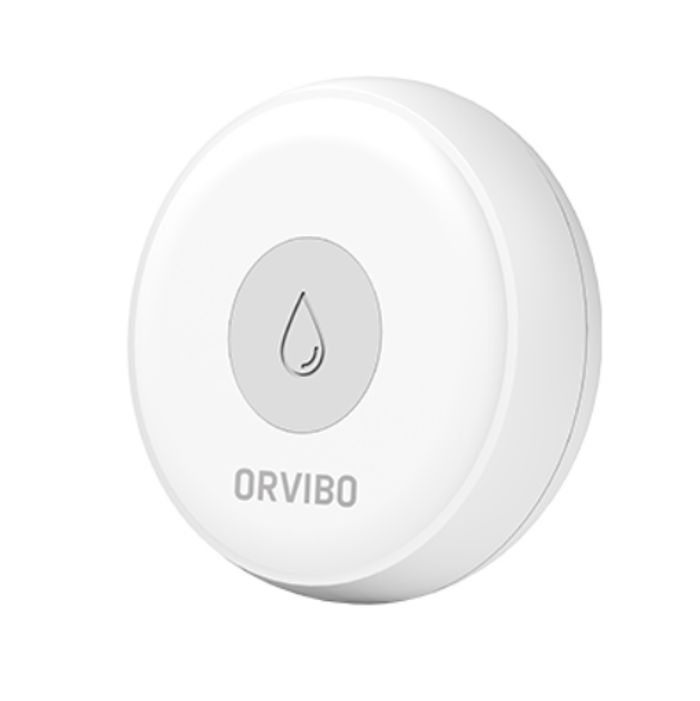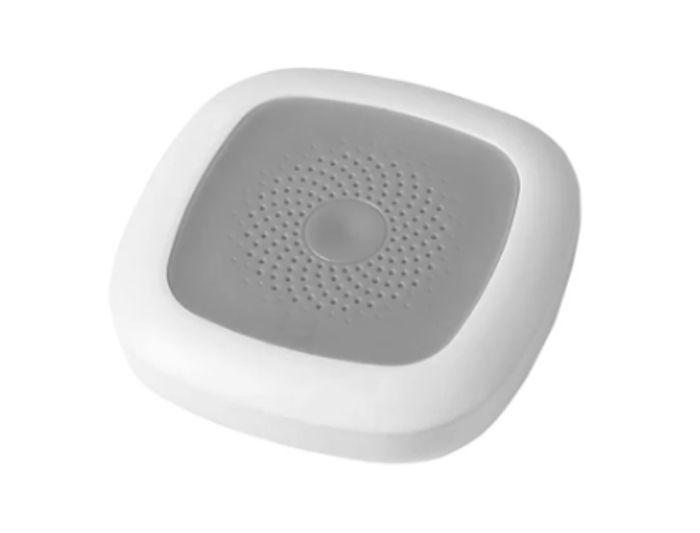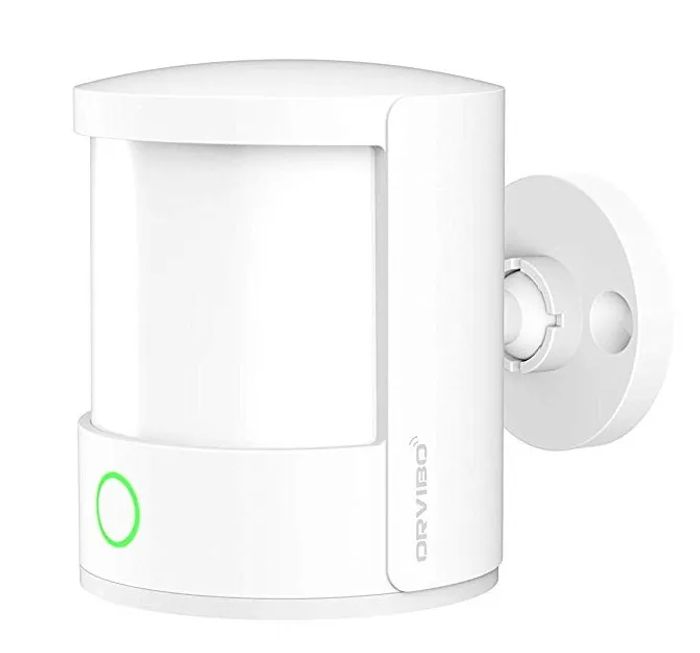Smart Home
Your home can move in the direction of your dreams!
A dream called a smart home!
The idea of having a smart home goes back centuries. In such a way that it can be said that human beings have been thinking about comfort and well-being in life since they stepped into this world. Therefore, he made a lot of efforts to achieve this convenience until he created tremendous changes with the invention of the smartphone. Smart home technology brings comfort and peace of mind to the residents of the house by managing the home space and home appliances with a smart mobile phone and by using Internet of Things (IoT) technologies. In the rest of this article, the comprehensive concepts of home smartness, its features, and benefits will be fully explained.
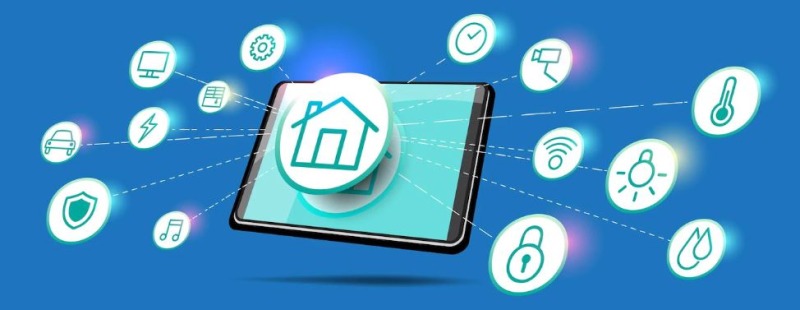
Smart home or traditional house? The choice is yours!
To express the difference between a smart home and a traditional one, the best example is the comparison of today's smartphones such as the iPhone 14 with the Nokia 1100. To better understand this distinction, consider the following example.
Imagine a house where you have to open and close the doors and windows yourself; Turn off the lights. Turn on the TV and the music device manually; To make sure that the gas valve is closed, you have to travel a distance from work to home; To make your home safe, you need to take help from big locks. This is where the difference between a smart and traditional home appears. All these things are the facilities of a traditional house that most people still use. Now imagine a house where all of its affairs and facilities are managed with a few clicks and through a mobile phone.
Therefore, the smart home refers to progressive homes that are equipped with lighting, heating, cooling, and other facilities and electronic devices that can be controlled remotely by a smartphone (or laptop, tablet, and computer). The main purpose of smart homes is to improve the functions and quality of life and comfort at home. Other goals include greater security and more efficient use of energy thanks to Internet of Things (IoT) technologies.
In other words, the smart home, which is often known as home automation, is based on the networking of various electrical and electronic equipment in the home that is controlled by a centralized system. This system can be monitored using a wall touch panel, remote control, smartphone or tablet, and even with voice recognition.
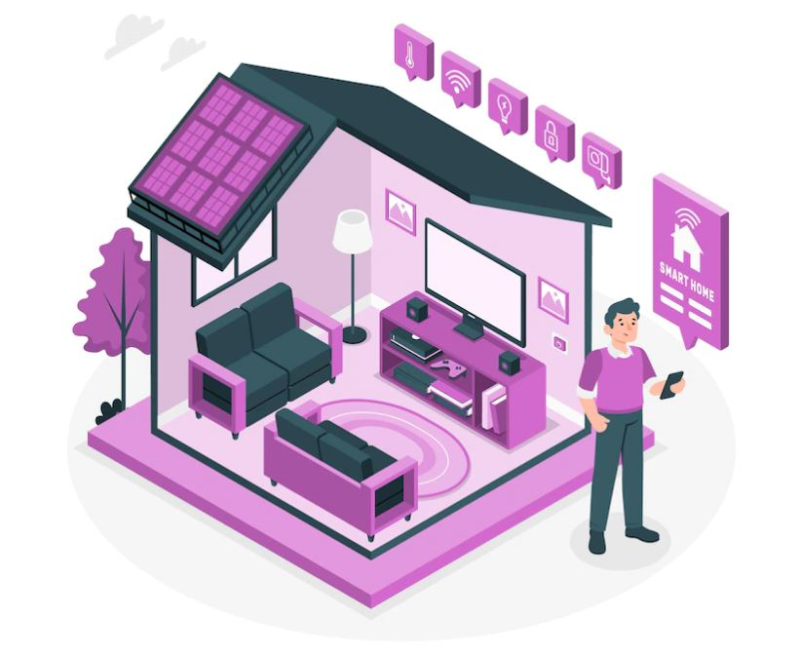
Join us in examining the advantages of a smart home compared to a normal home!
When you hear the word “smart home”, you may think that making homes smart is an opportunity to show off or align with the most creative innovations in the world. But the role of the smart home in improving our lifestyle and living conditions, which we live in in the golden age of technology development, goes beyond these things. Some of these examples are mentioned below:
- Enjoy being smart!
Smart home systems are surprisingly flexible when it comes to housing new devices and technologies. No matter how advanced your home appliances look today, newer models will come out over time. By being able to integrate these new arrivals with older devices in the home, your job as a homeowner will be much easier.
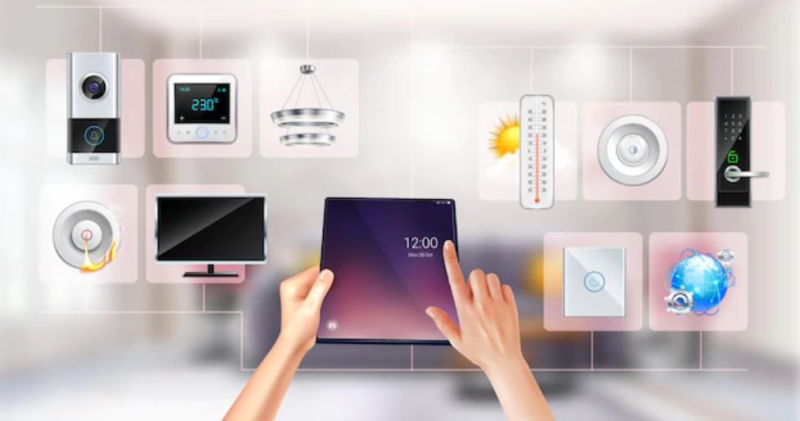
- Maximize the security of your home!
With the introduction of security and monitoring devices in the smart home network, the security of your home can skyrocket. Occupancy sensors, surveillance cameras, automatic door locks, and other security measures are examples of new Internet of Things (IoT) technologies helping to improve security throughout smart homes, helping you turn them off before you go to bed. Manage on your smartphone. These devices also enable you to receive security alerts on your smartphone and take the necessary security measures.
- Monitor the operation of your home appliances remotely!
Do not underestimate the power of managing electronic home devices remotely using Internet of Things (IoT) technologies. For example, on a hot summer day, before you get home from work, you can turn on the air conditioner remotely and cool down the home with just one click on your mobile phone application. If you are still at the store and shopping, you can turn on the oven to warm up on the way home. You can even turn on and off the lights or see who is at your door!
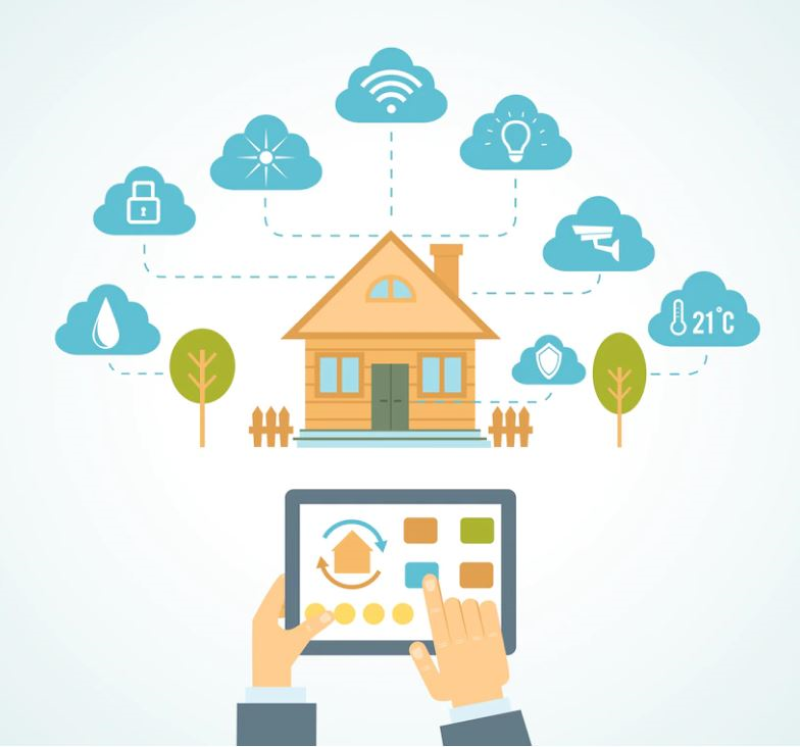
- Optimize energy use!
Depending on how you use your smart home technologies, it is possible to optimize the amount of energy used in your home's interior. For example, you can monitor the heating and cooling of your home more precisely with a smart thermostat. In this way, the intelligent technologies of the Internet of Things (IoT) suggest the appropriate temperature throughout the day by identifying the temperature settings of your home. Lights and chandeliers can be programmed to switch to evening mode when the sun goes down; Or when you enter or leave the rooms, the lights turn on and off automatically. So, you will never worry about wasting energy.
- Have a new insight into home management!
Among the other benefits of home automation that should be mentioned is providing new insight into how your home functions. For example, you can manage the number of times you watch TV, the type and duration of food you cook in the oven, the types of food you keep in the refrigerator, and your energy consumption habits over time. As a result, you may be able to make changes in your lifestyle by analyzing your daily habits and behaviors.

Ten places that distinguish a smart home from a normal home!
- Smart lighting
By using the central management system, the lighting of different parts of the building can be made smart. Lighting control is one of the advantages of a smart home, which includes turning on and off the lights automatically, adjusting the amount of light, and viewing their status from a distance and outside the building.
- Protection and security systems
Fire alarm and extinguishing systems, entry and exit of people, closed circuit cameras, smart gas valve lever, water leakage, and flood protection, as well as protection against electric shock, can be connected to the central management intelligent system and controlled by it.
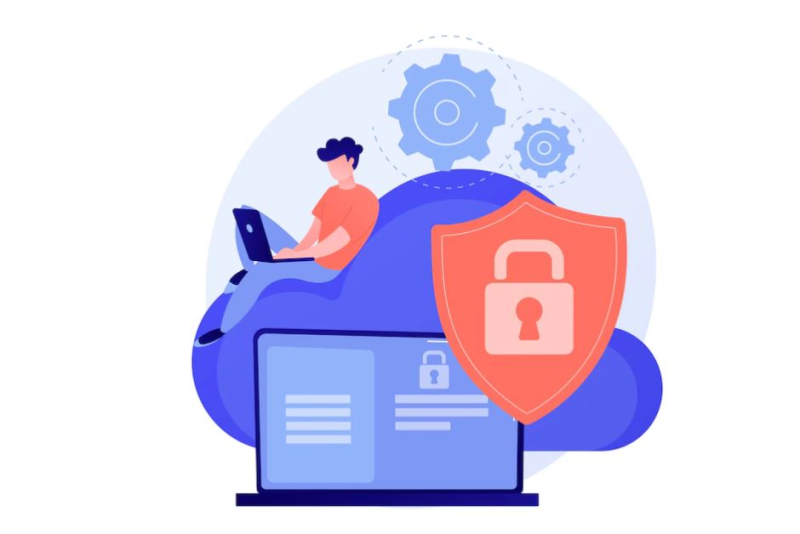
- Door, window, curtain, and canopy sensor
By means of the central management intelligent system, it is possible to manage all the mentioned cases, observe their status and issue the necessary orders in this regard. You can even use a fingerprint sensor or a magnetic card, in addition to creating more security, and also apply for timing access. This feature is one of the most special advantages of a smart home.
- Cooling and heating systems (air conditioning)
Cooling and heating systems can include central equipment as well as equipment used in the interior of the house. Central equipment in the engine room such as chiller, hot water boiler, system pumps, and internal equipment are fan coils, coolers, and air conditioners. Through the intelligent central management system, it is possible to turn on and off the central equipment at specific times and remotely, or to apply the necessary changes due to environmental conditions. This system is also able to intelligently control the temperature of the rooms and turn off the equipment in the absence of people.
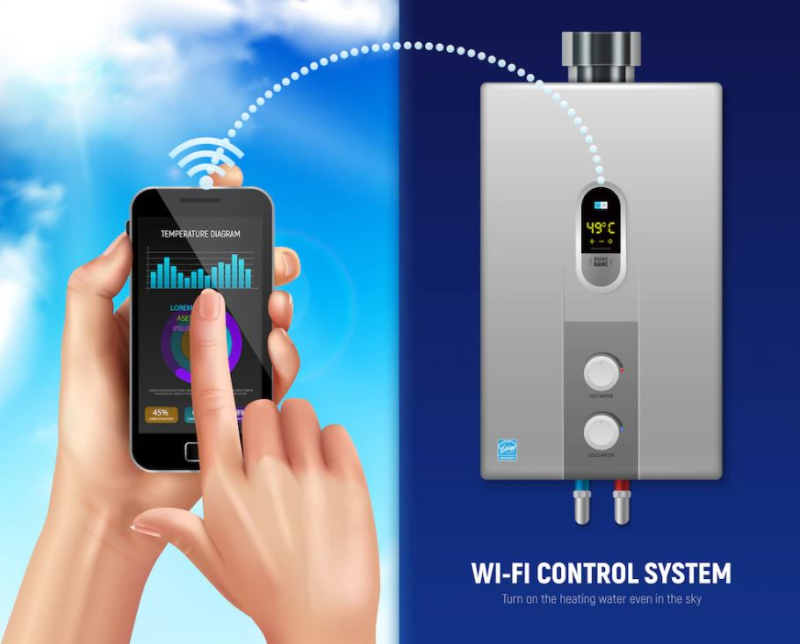
- Audio and video systems
One of the advantages of home automation is the possibility of using a central audio archive. In such a way that it is possible to choose a piece of favorite music or to perform various ceremonies by choosing and performing the predefined modes.
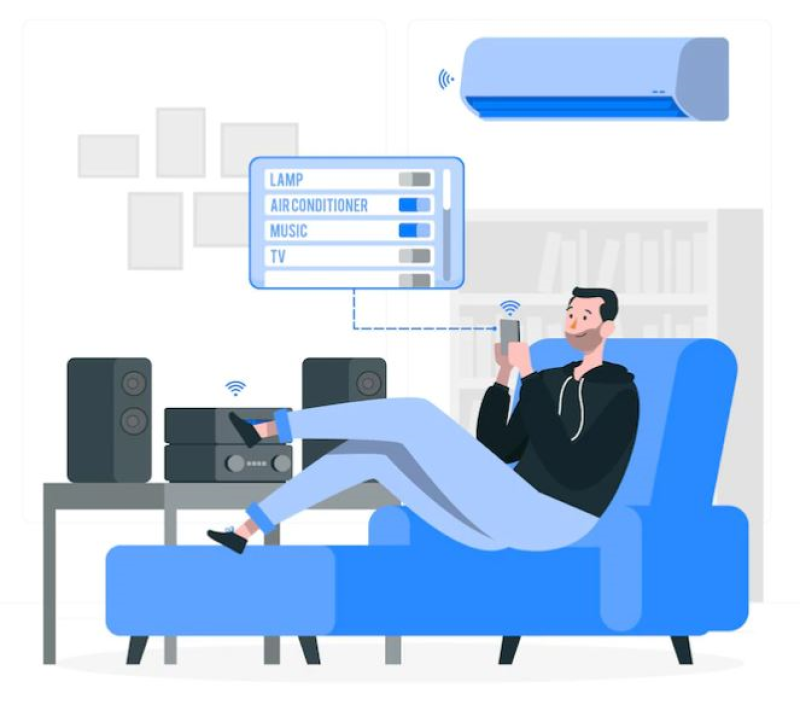
- Check-in and check-out system control
The intelligent central management system in residential buildings provides the possibility of receiving the client's image on the screen and if the landlord is not present at home, the ability to record the image along with the time of the visit. If this system is connected to the Internet, it is possible to communicate with the guest.
- Control of swimming pool, sauna, and jacuzzi facilities
By using Internet of Things (IoT) tools in home automation, it is possible to intelligently turn on and off these equipment and manage purification, ventilation, and temperature control devices.

- Communication systems management
Support for telephone lines, answering machines, and central telephones are also other features of the central intelligent management system.
- Smart irrigation system
The intelligent watering system for plants in the yard or inside the building is done automatically according to a predetermined schedule. As a result, by using the building management system, buildings can be made intelligent.
- Smart pet food container
Smart pet food bowl helps you monitor how much your pet eats. This container has a food storage tank that prevents air and moisture from entering the tank and food oxidation. The operation of this device can be controlled through a mobile phone application, and with the existing sensors, the exact weight of the food will be recorded.

How does a house turn into a smart house?
In planning to make homes smart with the help of the Internet of Things (IoT), the following should be considered:
• Internet connection and Wi-Fi
• Central management intelligent platform
• Smartphone, tablet, or laptop to control and monitor devices and functions
By using the IoTSmile platform and implementing the Internet of Things (IoT) in the smart homes, all sensors, devices, and subsystems can work together seamlessly. Among the most important achievements that the use of this platform will lead to are the following:
• Energy consumption management
• Reducing house expenses
• Increasing safety and security level
• The possibility of remote home appliance management
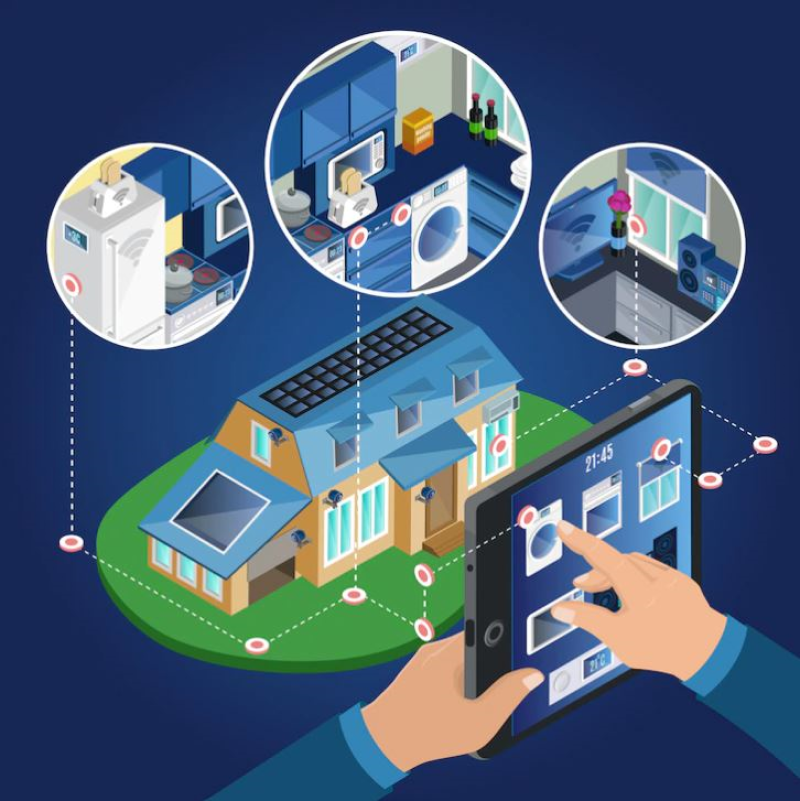
To receive advice and prepare any of the products, you can contact us by calling the numbers announced on the site, sending an email, or registering a ticket. Our colleagues are ready to answer and guide you.
References:
- TechTarget: smart home or building (home automation or domotics-July 2020
- Infineon: Smart home
- ClearTax: Smart Home-Feb 20, 2023
- Investopedia: Smart Home: Definition, How They Work, Pros and Cons-September 14, 2022
- Webopedia: Smart Home-May 24, 2021
- Link. springer: Monitoring user activities in smart home environments-21 June 2008
- Cps.bureauveritas: Smart Home-LIVE WITH CONFIDENCE



